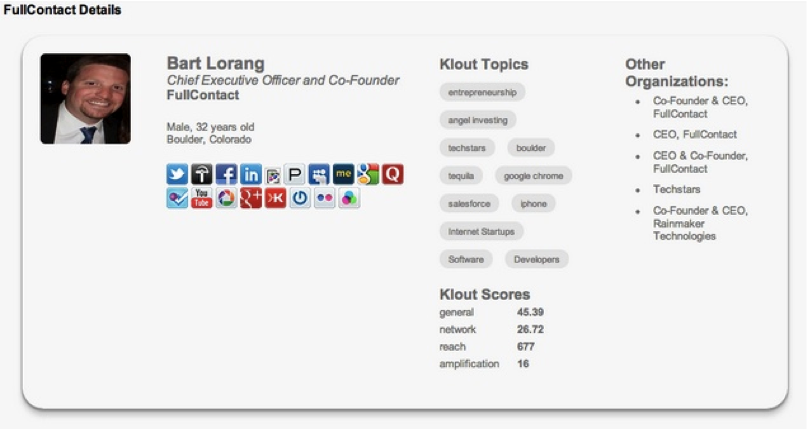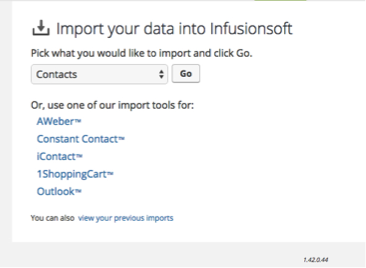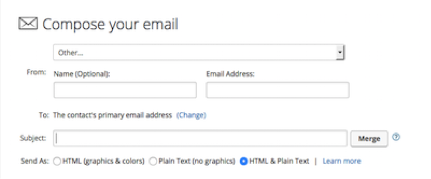by Kavin Patel
Let me guess: You’ve been in business for a couple years, and you have no problem getting that first sale from a new customer, but you do have a problem getting that second, third or even fourth sale. Am I in the ballpark? If so, I’ll teach you how to keep those customer profiles up to date and how to keep them coming back long after the first sale.
In my consulting years, the first thing I would ask my clients was to grant me access to their vault.
No, I didn’t mean the wall safe hidden behind the Degas painting. I was talking about the data vault. Every business owner maintains some form of database record of his or her customers. Whether it’s just a stack of invoices with coffee stains all over them, paper receipts lying around, business cards in a fish bowl, OR a digital file, which includes personal info and email addresses.
What people don’t often realize is that these customers have practically thrown themselves—and their valuable information—at you, and you have not taken the opportunity to capitalize on it. In this blog post I’ll show you how to gather the pot of gold, polish those coins up, and make it rain dolla bills.
Step 1: Find the gold
You’ll have to chase the end of the rainbow if you’ve been manually writing invoices and have paper receipts lying around. It’s important you get these into a digital format before doing anything else. Some tools I recommend for that are Free OCR and this tool that converts a PDF to an Excel file.
If you have an ecommerce site or have been generating customers through a series of landing pages, it’s best to gather all those into one csv file. You can do this by exporting each one and copy/pasting them into one Excel file. Make sure the first row includes the right header title for each column. For example first name, last name, company name, and email.
*Pro tip—Make sure to go into your LinkedIn account and export all the connections you have made. You can also do the same for your Facebook & Twitter accounts, too. FullContact will find the email address for you as long as you have those social links.
Step 2: Polish up your contacts
There’s a good chance you haven’t reached out to most of these customers in quite a while. You may not even have their email addresses. Here are two steps that will polish up your list within minutes:
- Go to kickbox and upload your list to verify that any email addresses you have are still valid. The last thing you want is for email to bounce: you never want the mail server overlords to see you as a pest.
- Once the contacts are verified, go to fullcontact.com and upload your verified list. FullContact will enrich those contacts with additional data. For example, it will put a pretty face to those contacts, populate a company name and even get you phone numbers!
These two services won’t break your bank account; on the contrary, they’ll save you tons of money and make you look like a baller when you personalize the message.
Step 3: Load your list to an email broadcaster
Now that you’ve verified which of your contacts are good to go, and you’ve enriched their profiles with additional information, its time to interact with them. To do this you will need an automated email marketing software; for funsies, let’s say that software is Infusionsoft by Keap.
Take your csv formatted contact list and upload it to Infusionsoft by Keap. Make sure to give them a proper tag, let’s say “customer,” or some other logical tag. By tagging them, you’re categorizing them so that in the future you can run reports to see which previous customers became repeat customers.
Now that you have uploaded your customers to an email broadcasting system, it’s time to put it to use. The next step is to identify the types of customers you have and make an offering to them. In order to do this, we need to build personas.
Making customer personas
Your business needs to use buyer personas. These are fictional characters that represent the type of individuals who are interested in your products and services. It’s normal for businesses to have a few different personas representing the different kinds of people that they sell to. Once you have them, personas will help you segment your audience and create stronger marketing campaigns that correspond to each segment.
Step 4: Format your buyer persona research in a compelling way
When you uploaded your list to FullContact, additional information on the contacts was added, which included company names. With this information, you can group your list of customers by industry. For example, your list may break down to real estate agents, attorneys, and dentists. Once you have your customer types identified, here are six tips to create the perfect message for them:
1. Goals: What are your customers’ primary and secondary goals?
2. Challenges: What challenges do the people on your list regularly face?
3. Take action: What can you do to help your customer achieve their goal? How will you help them overcome their challenges?
4. Common objections: Why would they choose not to buy your product/service? You can show social proofs and testimonials to help mitigate perceived risk.
5. Marketing message: How should you describe your solution to this type of customer? Since you’ve segmented them, tailor your language and pain points to their industry.
6. Elevator pitch: Sell your customer on your solution: how it will save them time, money and cost, etc. Again, use language and topics specific to their segment.
You can use this message to craft your email and for the sales page they arrive on. Which brings us to our next step: creating different mousetraps for your customers.
Step 5: Set up your mousetraps (aka segmented landing pages)
To really take advantage of segmenting and converting your list of customers, you need to build a sales page targeting each buyer persona. So for our example, we would need three pages in total, one sales page each for real estate agents, attorneys, and dentists.
To create sales pages, I recommend Convrrt (full disclosure: I’m a co-founder). Convrrt allows you to create “Smart Sites” that respond and adapt to how your customers interact with your page, and they have pre-made Smart Sites that match your business goals ready to be launched.
When it comes to choosing a Smart Site, you need to be certain what your business offering is. Are you trying to sell an ebook, generate new leads, promote a new product, or presell a product? Once you’ve identified your offer, you can select a Smart Site that fits your business goal.
Step 6: Piece it together
Now that you understand the types of customer groups you have and your product offering to them, it’s time to put everything together. Start by going into your email broadcasting tool and setting up each of your emails. If you’re using Infusionsoft by Keap, you’ll see the following screen:
*Pro tip—I’ve seen “Hi [FirstName]” work really well as a subject line for the first email. I also recommend doing plain HTML on the first one to make it look more personal, like an email you composed from your desktop specifically for the recipient.
For each of the emails, make sure to map the call to action (CTA) button or text with a link to the Smart Site. In this example we should have three emails with their own unique message that have a link to its appropriate Smart Site.
This will allow you to track the number of emails that were sent out, who opened them and who opted in for your offer. When your customer receives your email, they’ll feel like you’re talking directly to them because you took the time to identify who they are, what they want and how you can help them out.
Driving targeted traffic
Now that we’ve figured out how to get your email list in order and segment it, it’s time to drive targeted traffic and optimize your messaging to increase conversion rates.
The power of social media and paid ads make it easy to drive targeted traffic, even when you have a tight. Below is a list of channels we can utilize today with a low budget, and which platforms work best for what uses and results.
- Facebook: If you’re putting on an event or you own a local business, Facebook is great avenue. You can target the right prospects through their Lookalike Audience feature, which markets your local business or event to people who have similar taste and interest as your previous attendees or customers.
- Twitter: If you have a SaaS application, Twitter is a great avenue for acquiring new leads and customers. This allows you to engage with them at the right time and offer exclusive offers. Twitter is also a great way to share content, generate inbound marketing, and see what people are saying about your competitors.
- Instagram: If you’re looking at creating a community of loyal followers and you have a business that’s very visual (travel, fashion, and fitness businesses especially rock this medium), Instagram is the place to be. It’s great if you’re just starting off with a new business idea and want to build a good list of followers before you release your offer. Once you’ve built a reasonably sized list, you can promote your offers by listing a link in your bio to your product-offering page.
- LinkedIn: Great source if you provide services or need to get to top decision makers within an organization. LinkedIn also has groups that are very targeted and serve many niches. Get in there, and get to know the influencers.
- Blogging: There are tons of niche blogging communities who are looking for contributors and experts like you. Take advantage of these opportunities to showcase you as a domain expert. To find blogs that serve your market, you can go to Google and type “[your industry] + blog” and you’ll get results galore.
There are many other channels out there, too. It’s best that you perfect one and then move onto the next one. If you try to work on all channels all at once, you’ll find yourself very scattered.
Now that you have a better understanding of opportunities in each marketing channel, let’s take a look at how to optimize your messaging.
Customer experience has always been integral to marketing, so it’s important to deliver an awesome customer experience that resonates with your visitor, a site that responds and adapts to how your visitor interacts with your site. If they say no, do you have a counter offer? If they say yes, are there upsell opportunities? We do this with Smart Sites.
How to perfect your message
Below is an image that shows a typical visitor experience when they arrive on a page.
Here’s a checklist of items to keep in mind when crafting your message around visitor experience:
- The first thing a visitor is going to ask when arriving on your page is “Where am I and what can I do here?” Depending on the ad they clicked on or the link they came from, it’s important that the message on the page matches the message from their origination. If the messages don’t match, you can kiss them good-bye. This is the moment to really capture their attention.
- Be very direct on what you want them to do. Limit yourself to just one good call to action on your page, such as: “provide us your info to get a free download,” or, “purchase our product.” You can get very creative here by using Smart Sites to set up a funnel where if they do provide additional information, you upsell them to another offer and take them further down the sales cycle.
- Convince a visitor on your page that you are the best in what you do. You can do this by showcasing customer testimonials or showing how you differ from your competitors. Make your visitors feel that you offer an experience they can’t get anywhere else.
- Build urgency. Let visitors and customers know why it’s important to take action now and not later. You can do this by showing a timer, an expiration date, or limiting the offer to the first set of buyers who come in.
There you have it. We went through a series of exercises where we gathered our pot of gold, gave it a good rinse, and used it to make money for your business. The great thing about these steps is that they’re cost efficient and can provide results immediately. So get out there and start digging up your gold and cashing it in!
Kavin Patel is a co-founder at Convrrt and a inventor of Smart Sites. Smart Sites respond and adapt to what your visitors do and how they behave. Kavin has more than10 years of digital marketing experience and is an expert when it comes to marketing automation. Say hi @omazingk









